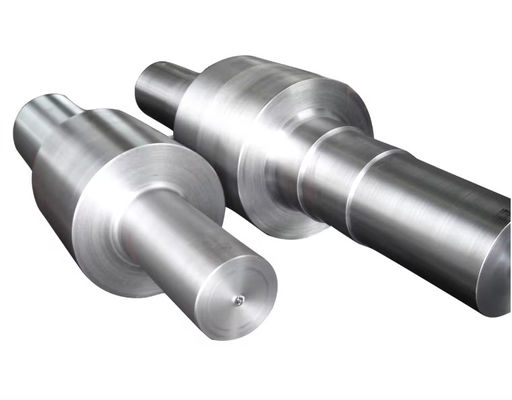

High Speed Rolling Mill Rolls Industrial Steel Roller Forged Steel Rollers
Rolling Mill Rolls Description:
The Industrial Steel Roller is the main working part and tool on the rolling mill that causes continuous plastic deformation of metal. The Mill Roll mainly consists of three parts: roll body, roll neck and shaft head. The roll body is the middle part of the roll that actually participates in rolling metal. It has a smooth cylindrical or grooved surface. The roll neck is installed in the bearing and transmits the rolling force to the frame through the bearing seat and the pressing device. The transmission end shaft head is connected to the gear seat through the connecting shaft to transmit the rotational torque of the motor to the roller. The Rolling Mill Rolls can be arranged in the form of two-roller, three-roller, four-roller or multi-roller in the rolling mill frame.
Rolling Mill Rolls Specification:
| Model | HSS / HBHSS / BCI |
| Material | Carbon Steel,Alloy Steel,45 Steel, 42crmo,34crnimo6 |
| Diameter Of Shaft | Max 2500mm |
| Inspection |
Chemical Composition Test, Ultrasonic Test, Tensile Strength Test, Impact Test, Hardness Test, Dimension Test |
Rolling Mill Rolls Application:
1. Flat Rolling: Rolling mill rolls are extensively used in flat rolling processes, where metal sheets or strips are rolled between two rotating rolls. This process is employed in industries such as automotive, aerospace, construction, and manufacturing, to produce flat metal products like sheets, plates, and foils.
2. Shape Rolling: Rolling mill rolls are also used in shape rolling, which involves the deformation of metal billets or blooms into various shapes such as bars, rods, beams, and rails. The rolls apply pressure and force on the heated or pre-formed metal to shape it into the desired cross-sectional profile.
3. Hot Rolling: Hot rolling refers to the rolling process performed at elevated temperatures. Rolling mill rolls used in hot rolling operations must withstand high temperatures and significant loads. Hot rolling is commonly used for producing steel and other alloys, enabling the material to be formed and shaped easily.
4. Cold Rolling: Cold rolling is performed at room temperature or slightly below and is used to improve the mechanical properties, surface finish, and dimensional accuracy of the metal products. Rolling mill rolls used in cold rolling processes are typically made of harder materials and are designed to withstand the high pressures required for reducing the thickness of the metal.
5. Tandem Rolling: Tandem rolling mills consist of several stands of rolls arranged in succession, allowing for continuous and efficient rolling of the metal. Each set of rolls in the tandem mill performs a specific reduction in thickness or shaping operation, resulting in the desired final product.
![]()